|
Experiential learning resources for the innovative educator
I often get asked about tips for helping students build self-direction skills. Teachers commonly enter the world of student-led learning inspired and confident but quickly discover that many of their students are unable to self-direct, and that can be frustrating not just for you but for your students as well.
Your excitement gets squashed and you are disappointed because your student-led learning plans didn’t unfold the way you expected.
So now what? Should you call it a day and get back to teacher-directed learning? Or could you mentor and train learners to build self-direction skills? The strategies in this blog post are to encourage you to choose the latter. The idea of this post is to answer that very common question, how to train, mentor, and develop self-directed learners to effectively and independently lead their own learning experiences in the classroom. The reality is that most of your students will start off resistant to self-directing because they lack the confidence and skill to self-direct. Being able to self-direct comes with changing their mindsets and helping students build the skills to do so. “Students’ progress from one stage to another is anything but orderly or direct…We want the students to move steadily and quickly through the stages; however, students do not develop in a linear fashion. It takes time.” - The Experiential Educator by Alice and Dave Kolb.
What the authors are referring to here are the transitional stages from teacher-directed to more student-directed.
My high school students rarely come to me with the skills to self-direct because their experiences in the classroom up to that point have been teacher-centered. My students were accustomed to having ideas, concepts, and learning activities delivered to them through textbooks, worksheets, lectures, etc.
And while these methods of teaching may have value here and there, they do not provide opportunities for students to develop the desired skills to self-direct.
These more direct instruction strategies also fortify the mindset that learning doesn’t come from experience in a real-world context. It just magically appears in front of you as soon as you walk into the classroom. This isn’t life. Teachers and parents are not always going to be there mass-producing volumes of information to students, and even if they were, does that benefit the learner long-term? One of the benefits of self-directed learning is giving students the tools to manage life’s projects on their own, locate information when it is not readily available, and creatively problem-solve life’s inevitable challenges. Student-centered learning helps students build self-direction skills such as organizing details, decision-making, task management, creative problem-solving, finding information, and more. As students develop self-direction skills through student-centered learning experiences they will eventually be confident and skilled enough to design, manage, and lead learning experiences on their own. The question, then, is how? How can you help students build self-direction skills proficiency? With time, patience, and the following strategies. How to Teach Self-Direction Skills to Student-Led Learners
The strategies listed have been categorized into three themes:
1) Personalization/relationship-building 2) Training 3) Systems
Personalization and Relationship-Building:
To effectively transition from teacher-directed to student-directed, you want to look at every individual as just that; an individual.
If you put the same expectations on every child, expecting each individual to produce outcomes of equal quality and grandeur, you’re going to be disappointed. If you expect every student to walk into your classroom with the same skill set, you’re going to be disappointed. Every student is going to walk into your classroom with diverse backgrounds, interests, life experiences, needs, challenges, goals, strengths, and yes, skill sets, and thus, learning needs to be personalized. What is preventing one student from self-directing might be a lack of organizational skills. Another student might lack confidence and is in need of a mindset shift, while another lacks experience locating information. The list goes on. Each student is going to start where they are, not where you are or where you expect them to be. For you to help your students get to a place of confident self-direction, you’re going to have to meet them where they are and to do that, you have to know them.
Training Self-Directed Learners:
As I’ve already said, and you may have experienced, your students may not have the skills to self-direct. Not yet. How can you help students build those skills?
With training and coaching! Offer self-direction skills exercises and training activities. Keep in mind that even providing skill-building training opportunities doesn’t mean your students will independently self-direct overnight. As Kolb said, it takes time and the transition process is not linear. It may seem like one of your students has it down and the next day they flounder. This will happen. Be patient, look at growth, and count small wins!
I continue to help students build self-direction skills throughout the semester or year - I don’t stop after a training course end, for example - but it’s nice to get in some practice time in before launching into student-led learning itself (students designing and leading their own learning experiences).
Systems and Routines:
Yes, eventually (ideally) self-directed learners will get to a place and skill level of being able to effectively design and lead their own learning experiences. Just because they are there, however, doesn’t render you useless.
Part of your job as a teacher in a self-directed classroom is to mentor, coach, and above all, facilitate self-directed learning. This means that you’ll put systems in place that help self-directed learners stay on track, focused, and productive. Systems help point learners in the right direction. Saying “yes, cool topic idea, start your project!” is a disaster waiting to happen. Put systems, routines, and structure in place such as :
Moving students from teacher-directed learning activities to self-directed is going to take time and practice. I have developed guiding materials designed around varying abilities to self-direct.
I offer teacher-directed activities for beginners, teacher-guided resources for those somewhere in the middle with choice sprinkled in, tool kits to guide those that are ready for authentic self-led learning. Moving students from teacher-directed to self-directed learning activities will take time and practice. I have developed guiding materials designed around varying abilities to self-direct. I offer teacher-directed resources for beginner self-directed learners. I offer teacher-guided resources for those somewhere in the middle with opportunities for choice and skill-building sprinkled in. Once students can confidently make choices when designing and managing projects, they go for the self-directed learning tool kits mentioned above. This is my system for gradually developing self-directed learners, but if you have a student who is ready for self-directed learning right off the bat, by all means, fast-forward! My students also thrive on routine. I try to develop a schedule and stick to it. Routines help students independently manage tasks and also model organization, time management, and follow-through.
Student-directed learning is powerful and the benefits are astronomical. You might feel as if your students aren’t cut out for this at times (or maybe that you’re not). I encourage you to squash that misconception, try out some of these strategies and see what happens.
I am at the point in my career where I don’t see a lack of self-direction as a challenge or a problem. It is expected. Your students may not know how to learn and that comes as no surprise to me. It is my job to be patient, give it time, unravel habits, encourage a mindset shift, and teach them how to self-direct. Teach them how to learn.
The feeling you get watching a student (that couldn’t even get a pencil without you when they first started) self-direct a learning experience for the first time compares to no other feeling you get as a teacher.
Everyone will be happier and more successful with some of these strategies in place for developing self-directed learners. Give your students the confidence to self-direct independently. They will thank you!
High School Student-Led Learning Resources:
Self-Directed Learning Blog Posts:
Join our experiential learning Facebook Group!
Did you know there is an experiential learning Facebook group? Check that out - Experiential Learning Community for K12 Teachers - and join in the discussion about experiential learning ideas such as real world learning in the classroom. Let's get social! Follow Experiential Learning Depot on Pinterest, Facebook, Youtube, and Instagram for more on experiential education.
Ready to dive deeper into student-led learning? Check out our new self-paced digital course!
Observe. Question. Explore. Share.
0 Comments
Your comment will be posted after it is approved.
Leave a Reply. |
Blog IntentTo provide innovative educational resources for educators, parents, and students, that go beyond lecture and worksheets. AuthorSara Segar, experiential life-science educator and advisor, curriculum writer, and mother of two. Categories
All
|
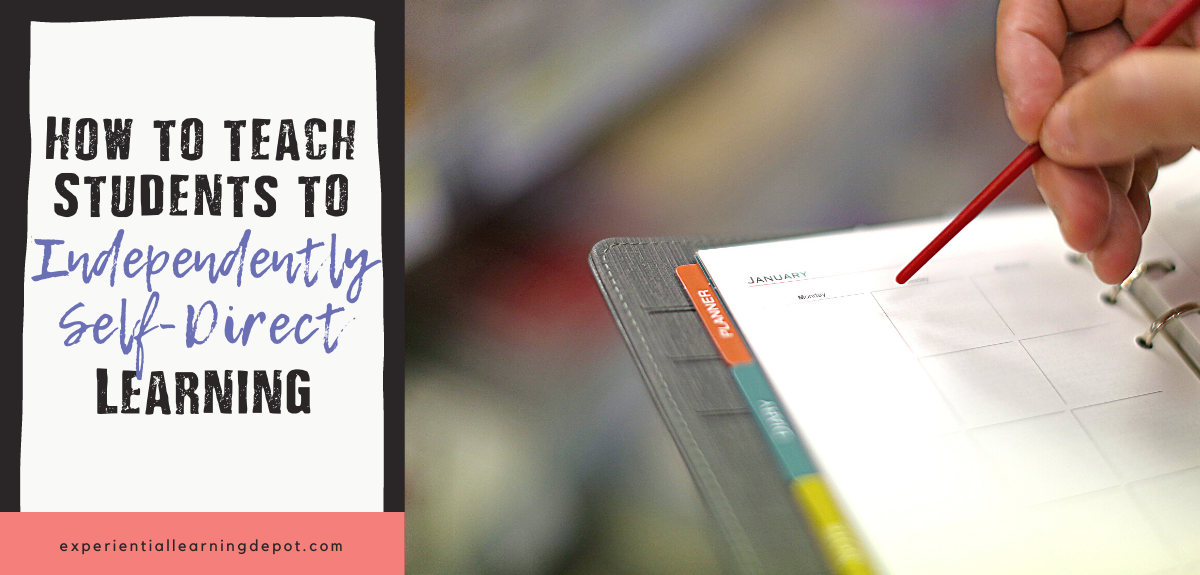
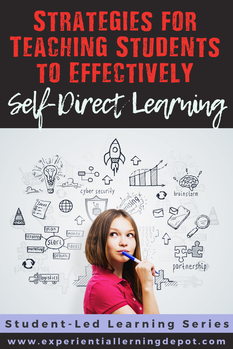
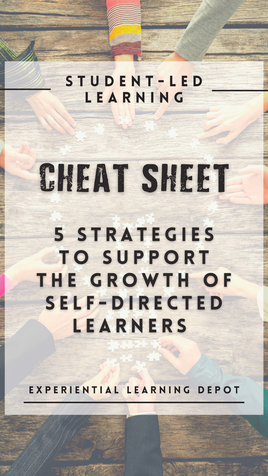
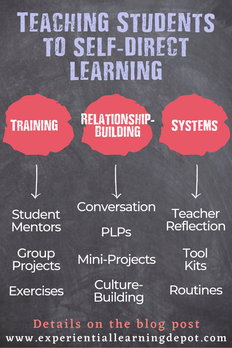
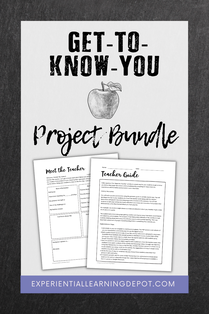
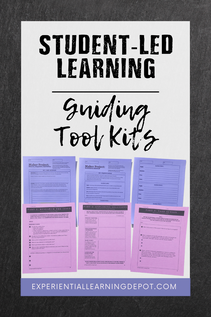
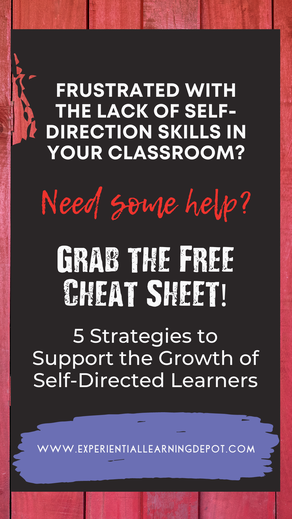
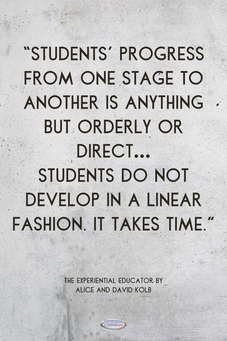
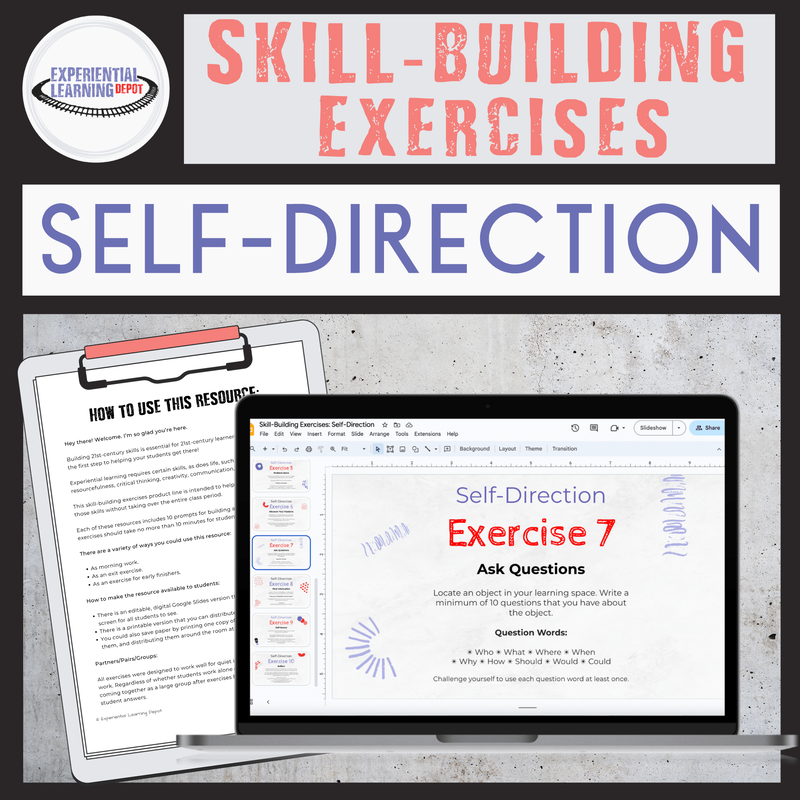
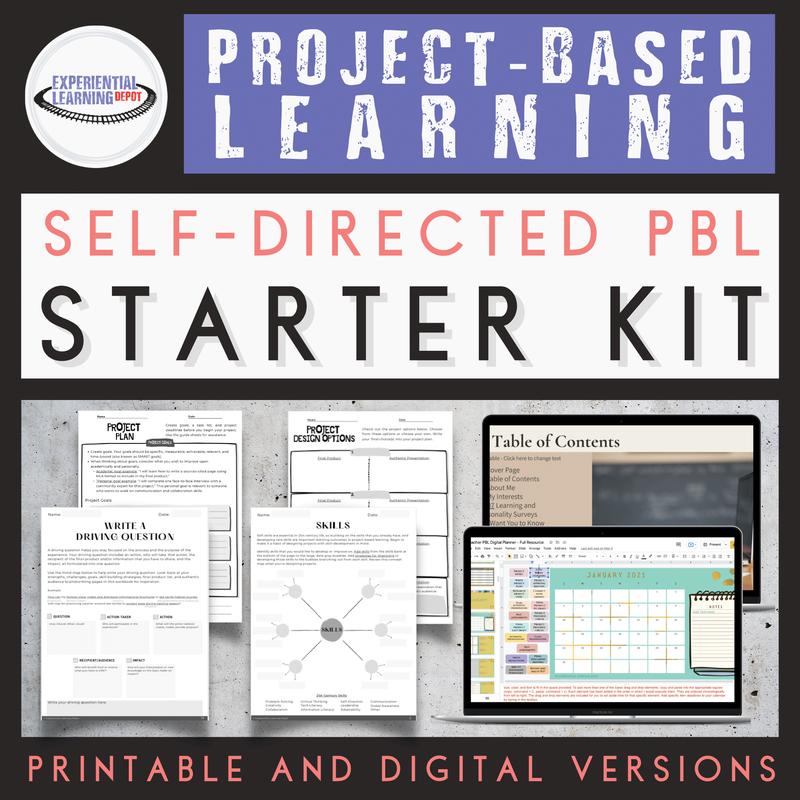
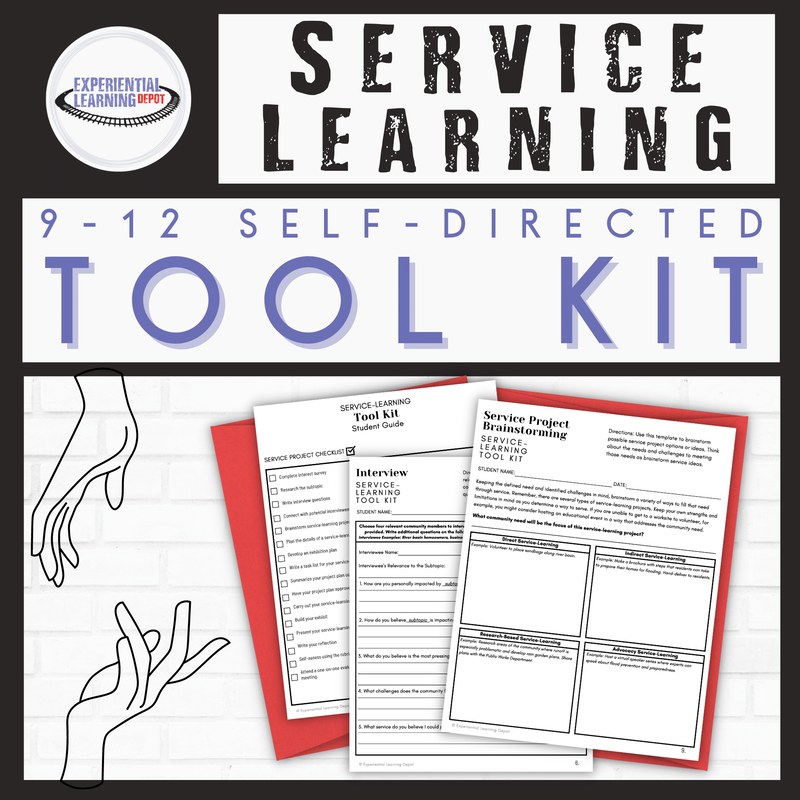
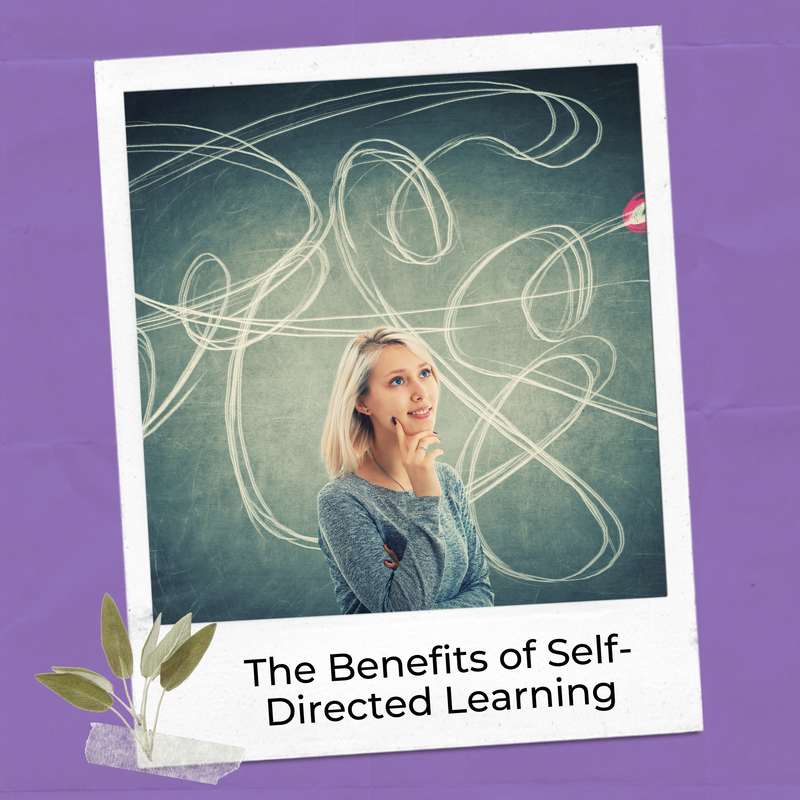
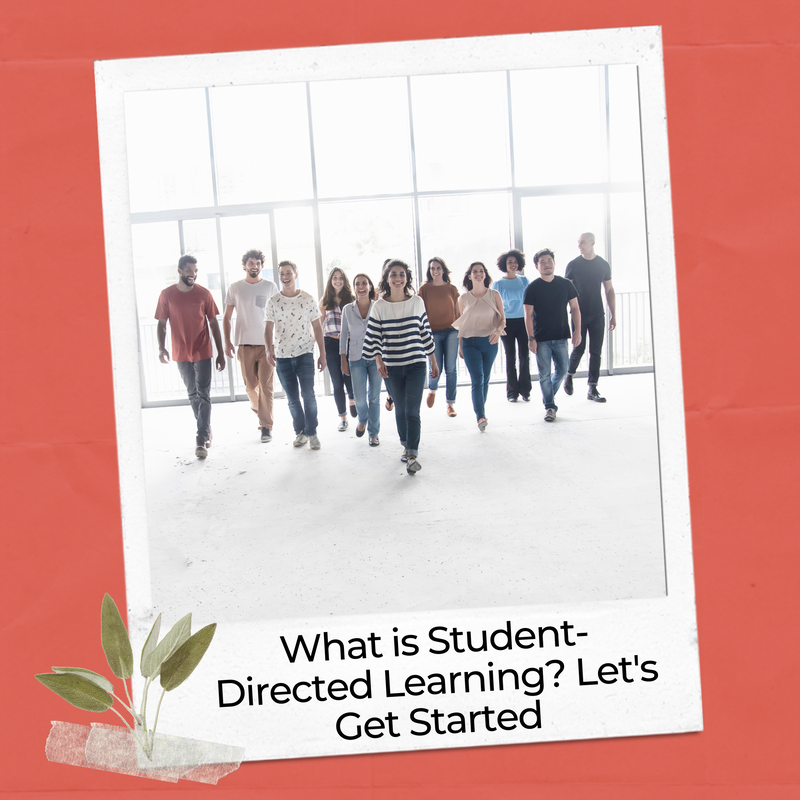
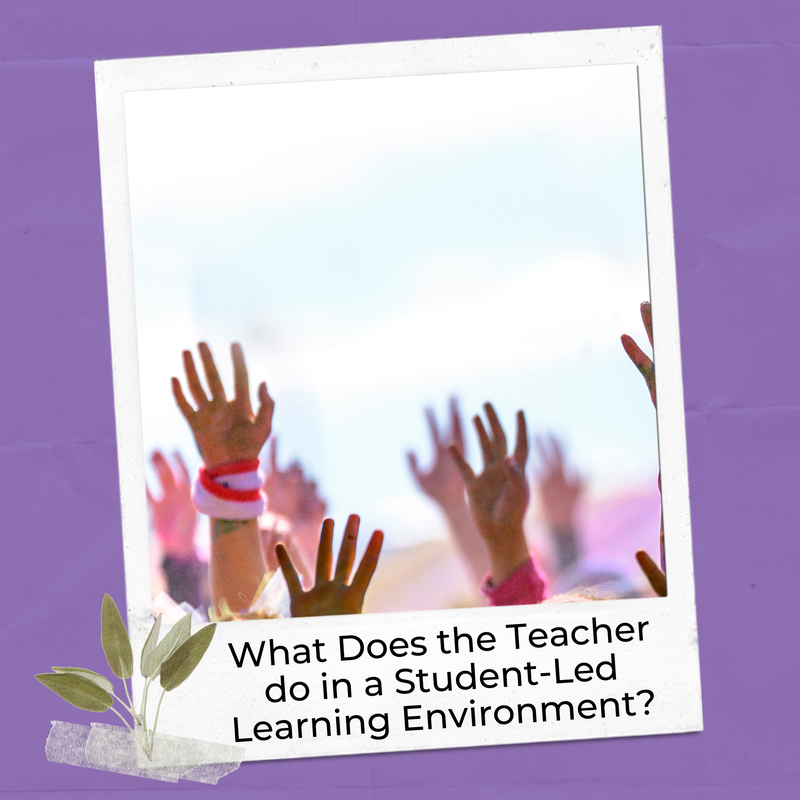
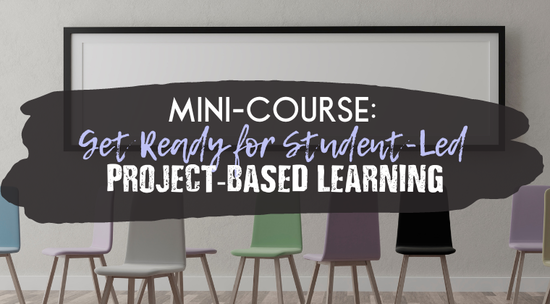


 RSS Feed
RSS Feed